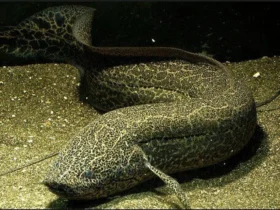In the canopies of North American forests, a vibrant flash of red brightens the green foliage—a sight that captures the awe and admiration of birdwatchers and nature enthusiasts alike. This fiery beauty is none other than the Scarlet Tanager (Piranga olivacea), a striking songbird known for its brilliant plumage and melodious songs. With its stunning red and black feathers and sweet melodies, the Scarlet Tanager stands as a cherished and treasured resident of the woodlands it calls home. In this article, we explore the captivating world of the Scarlet Tanager, uncovering its appearance, behavior, and significance in the rich ecosystems of North America.
Scarlet Tanager images

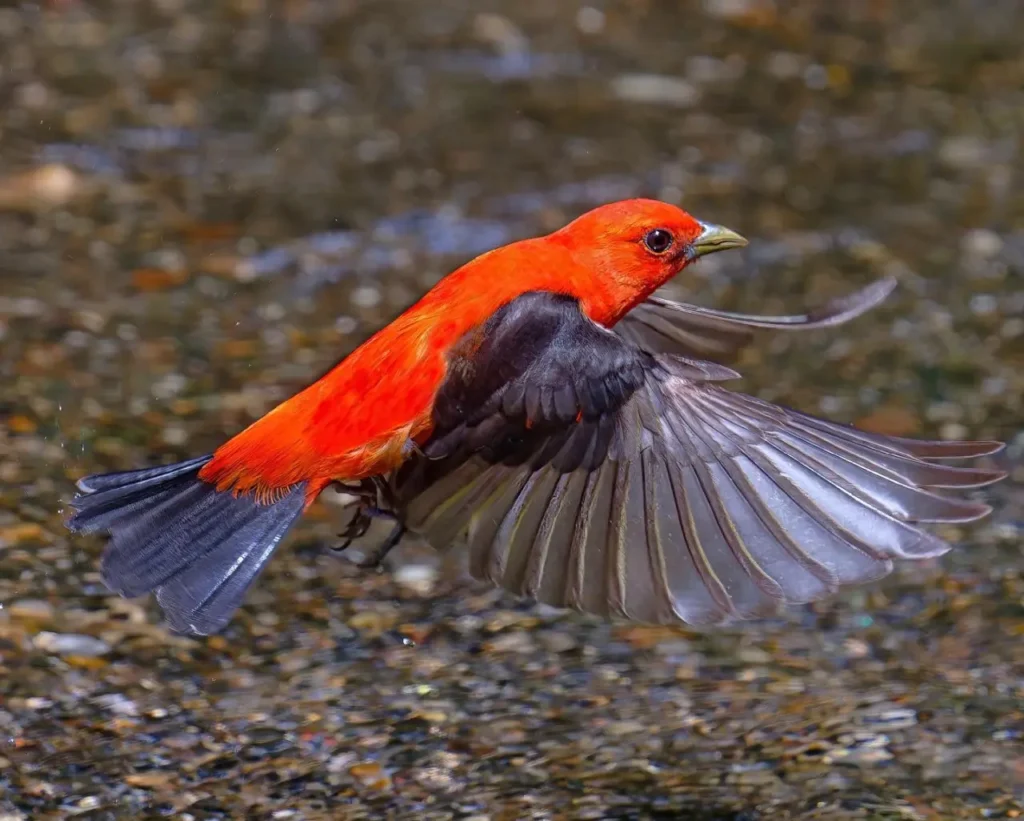
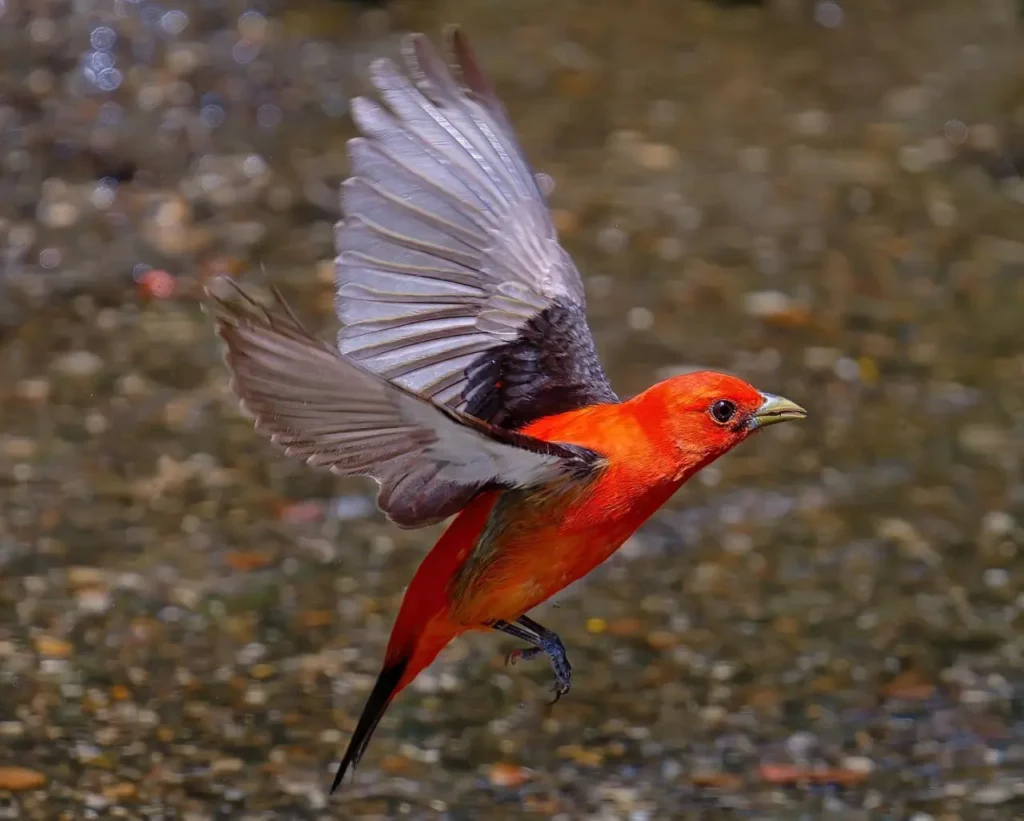


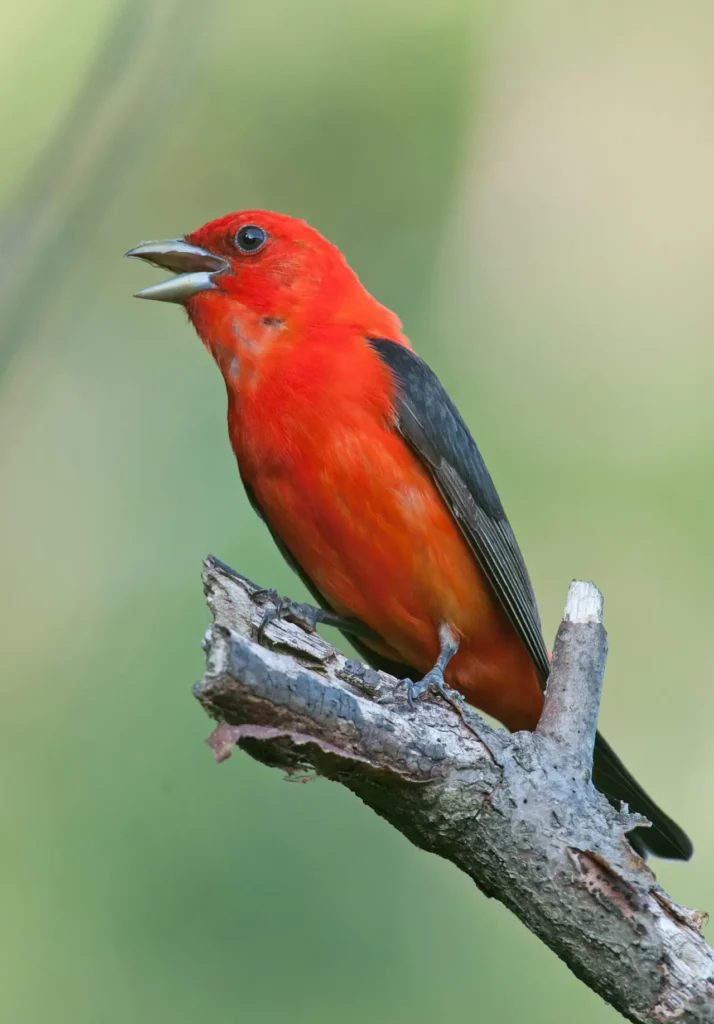
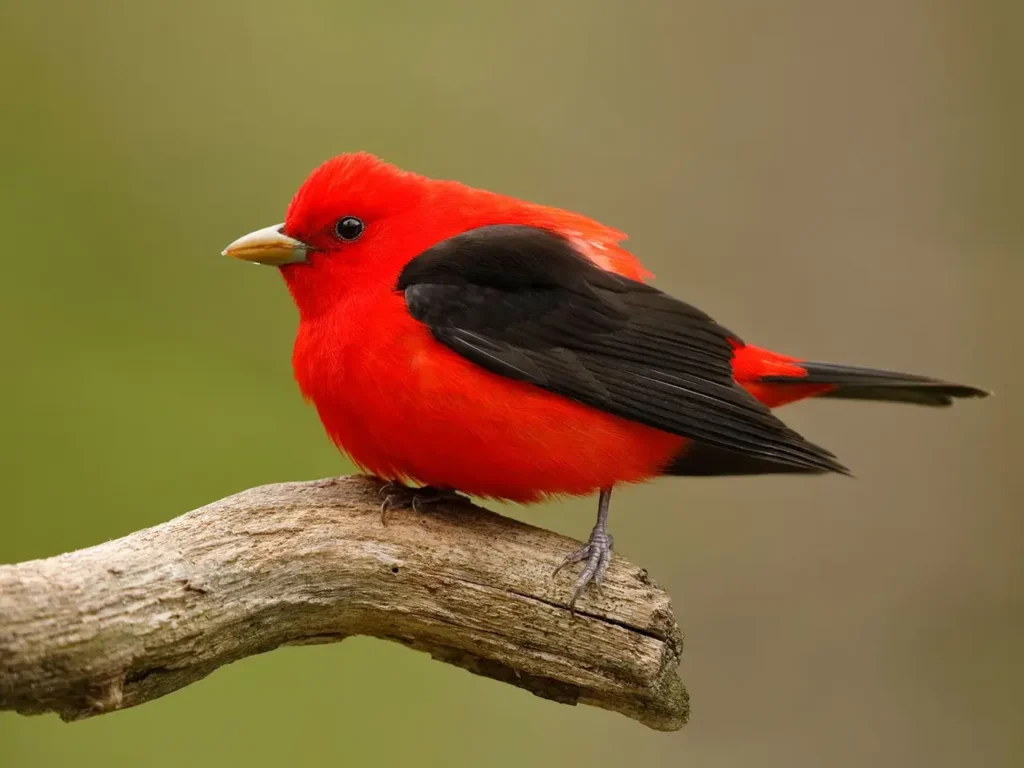
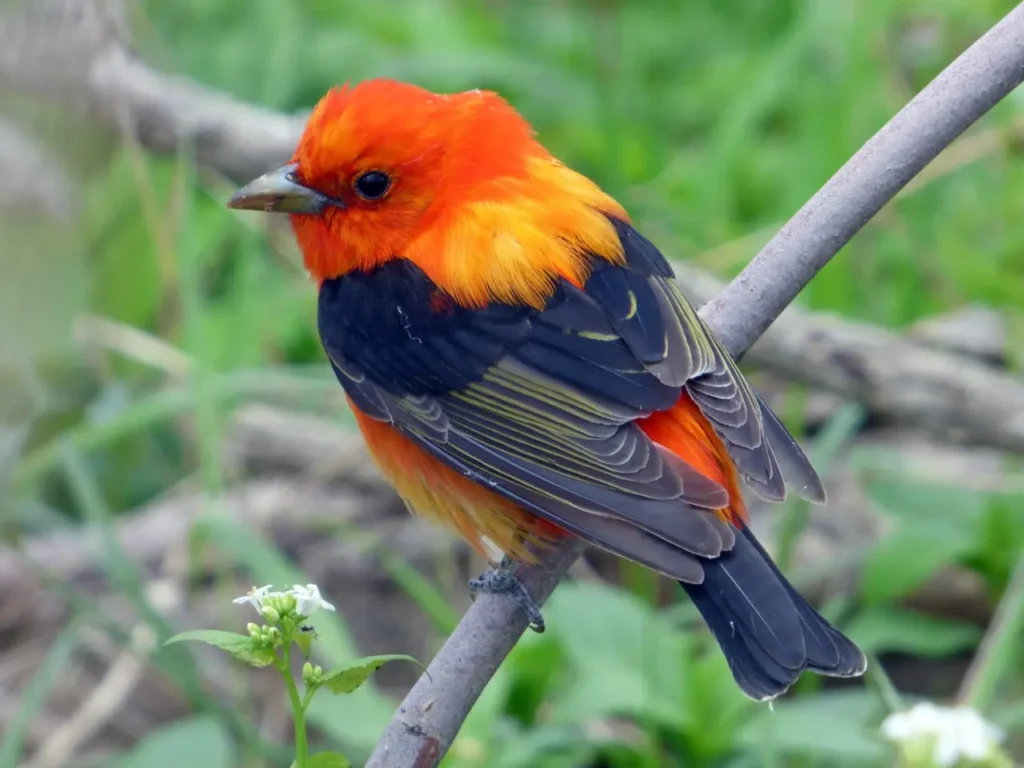
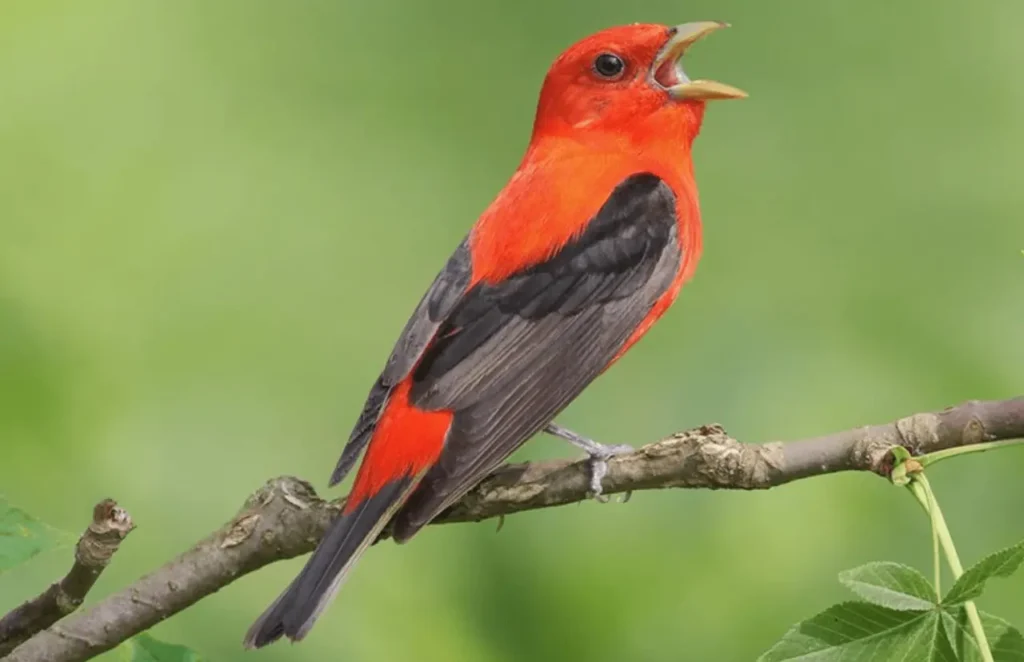
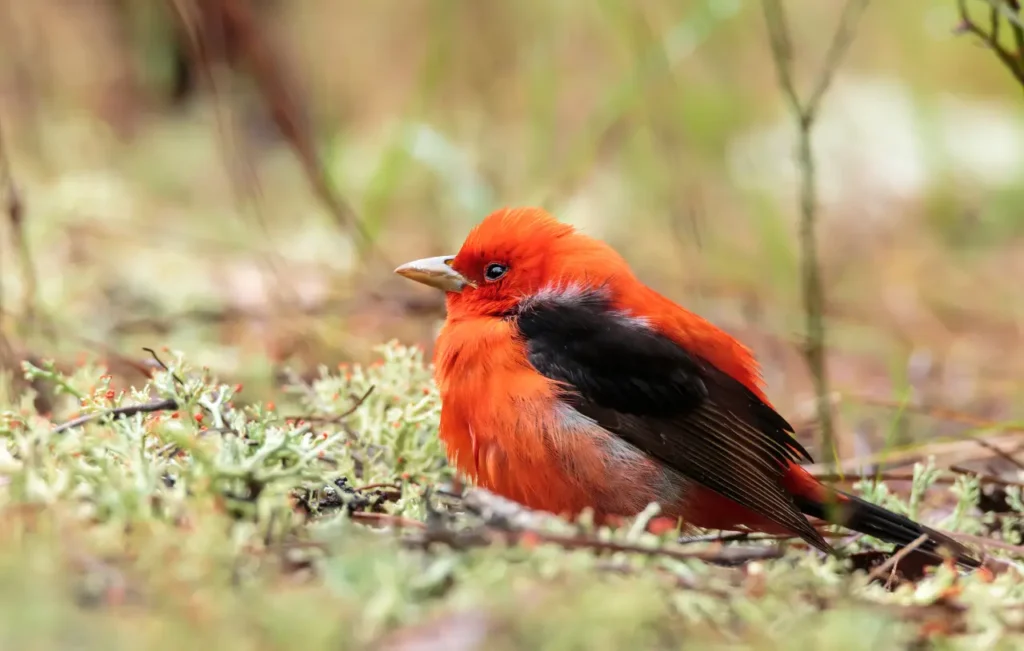


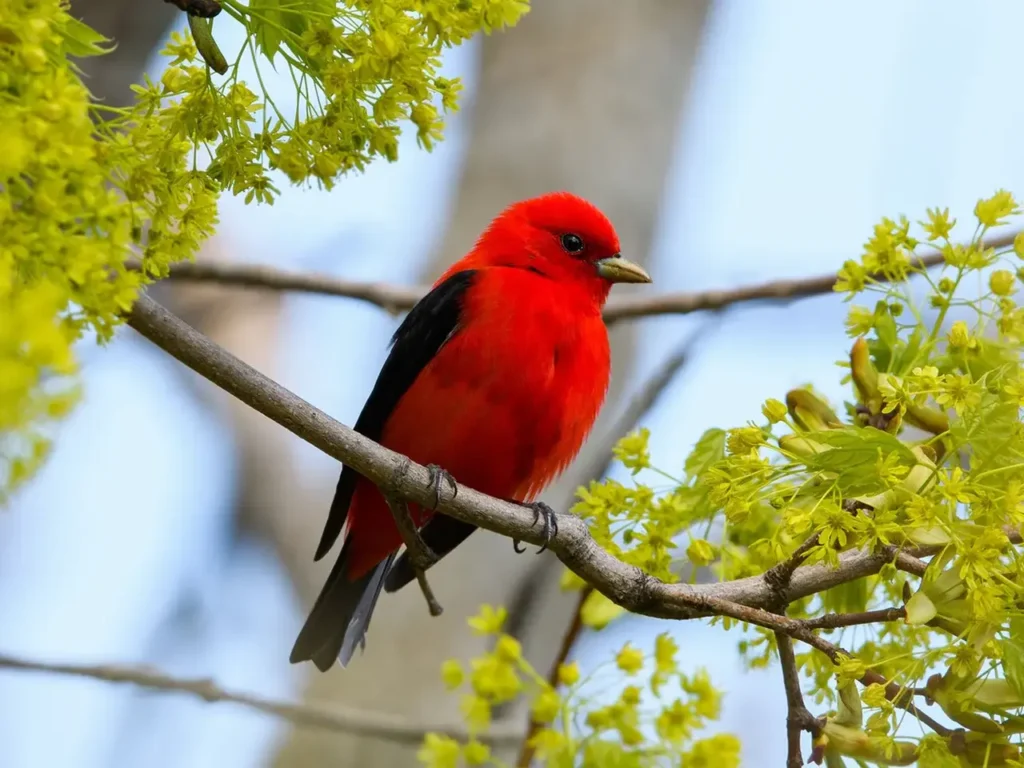

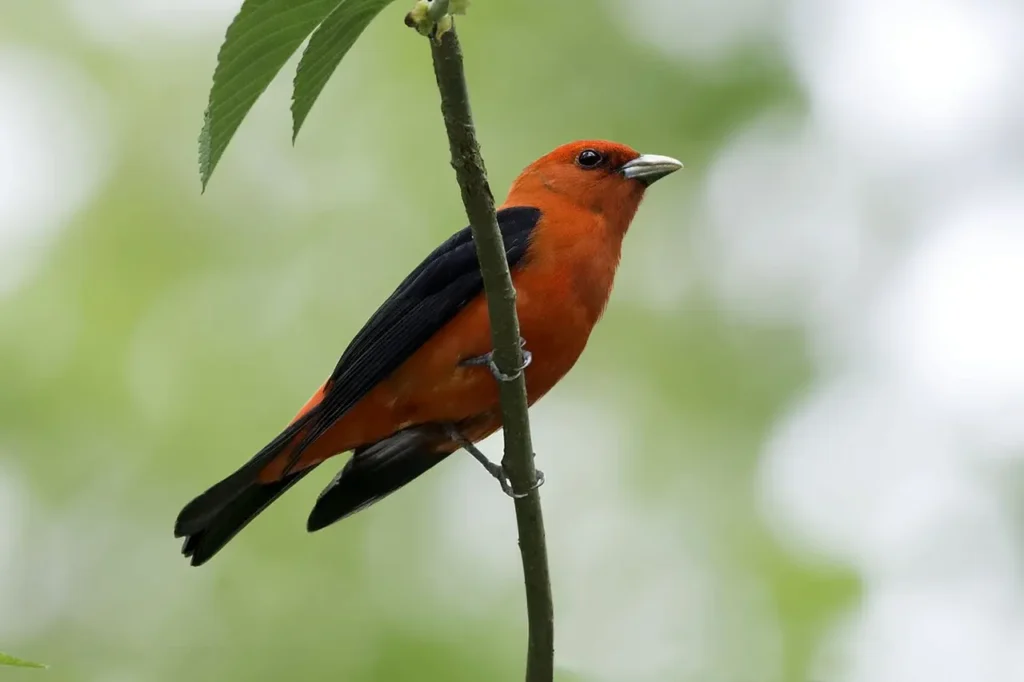
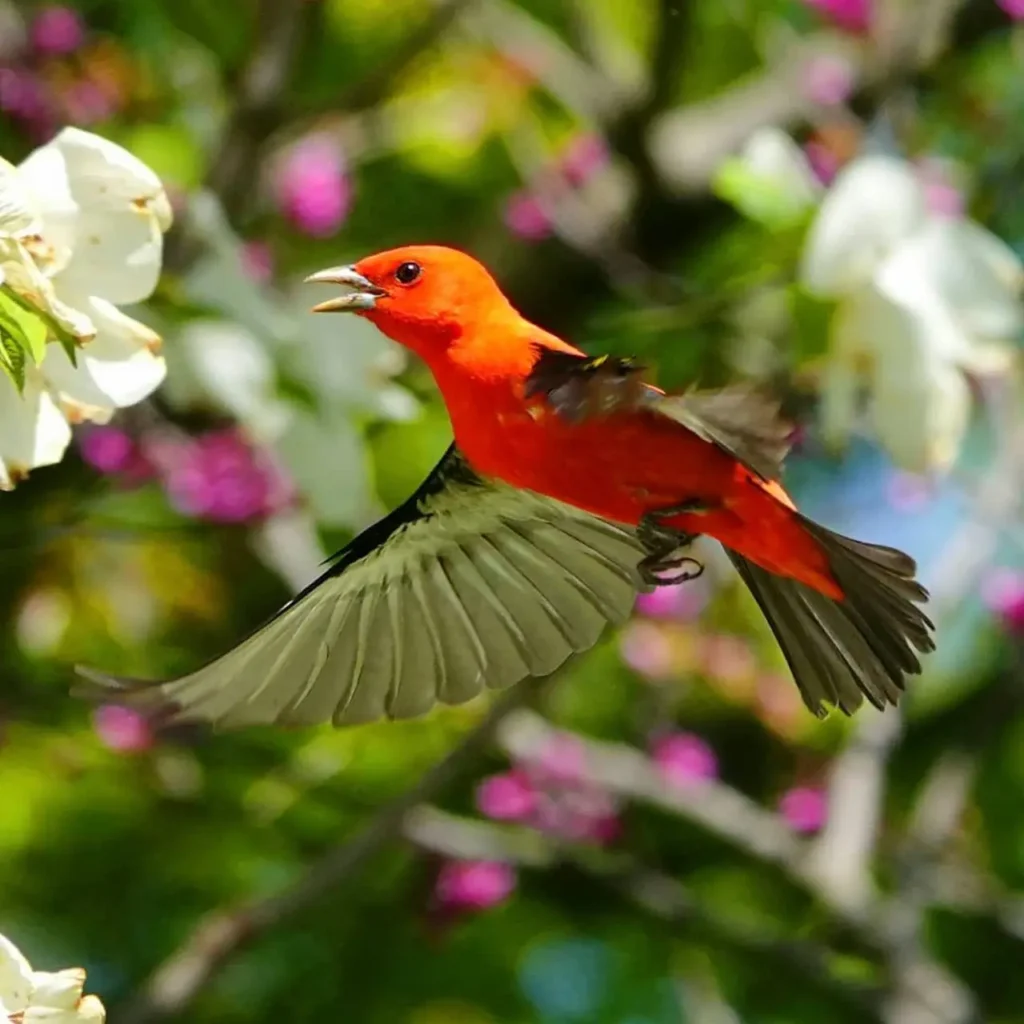
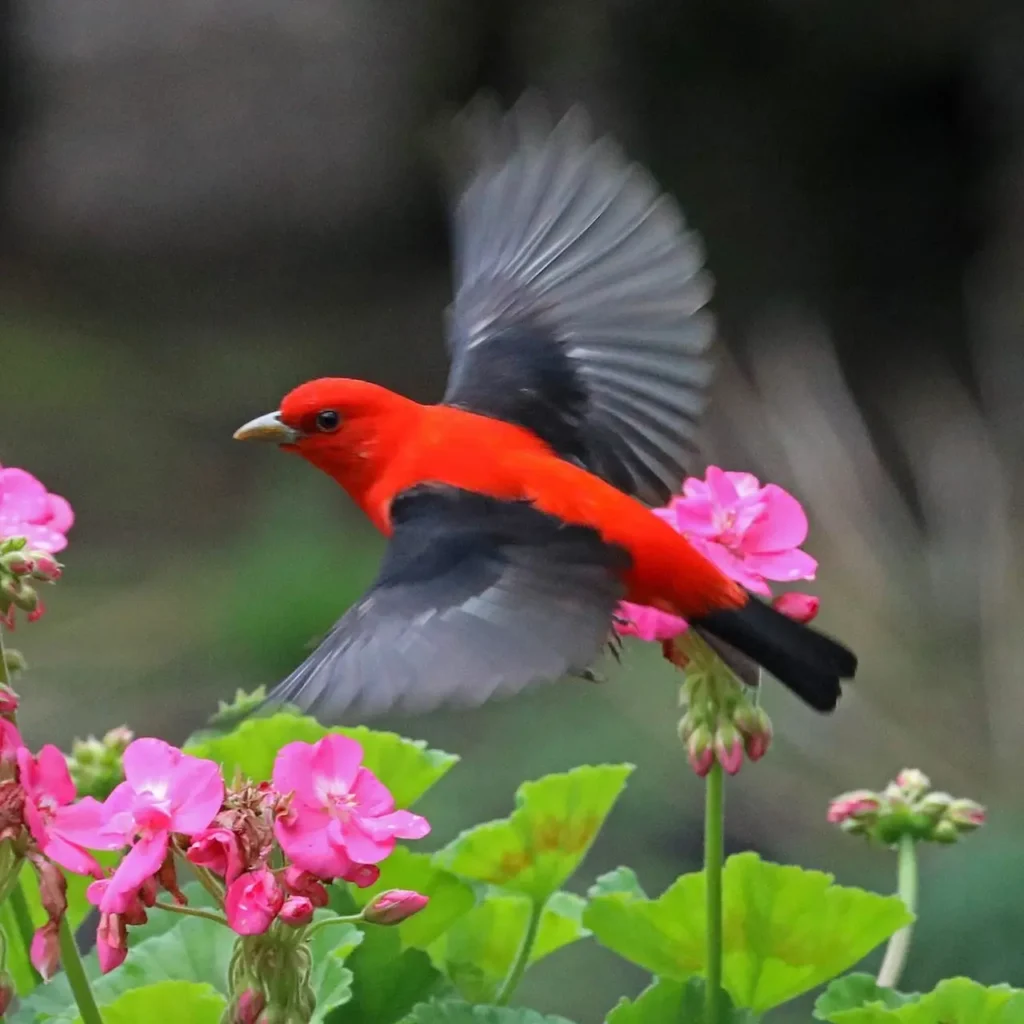
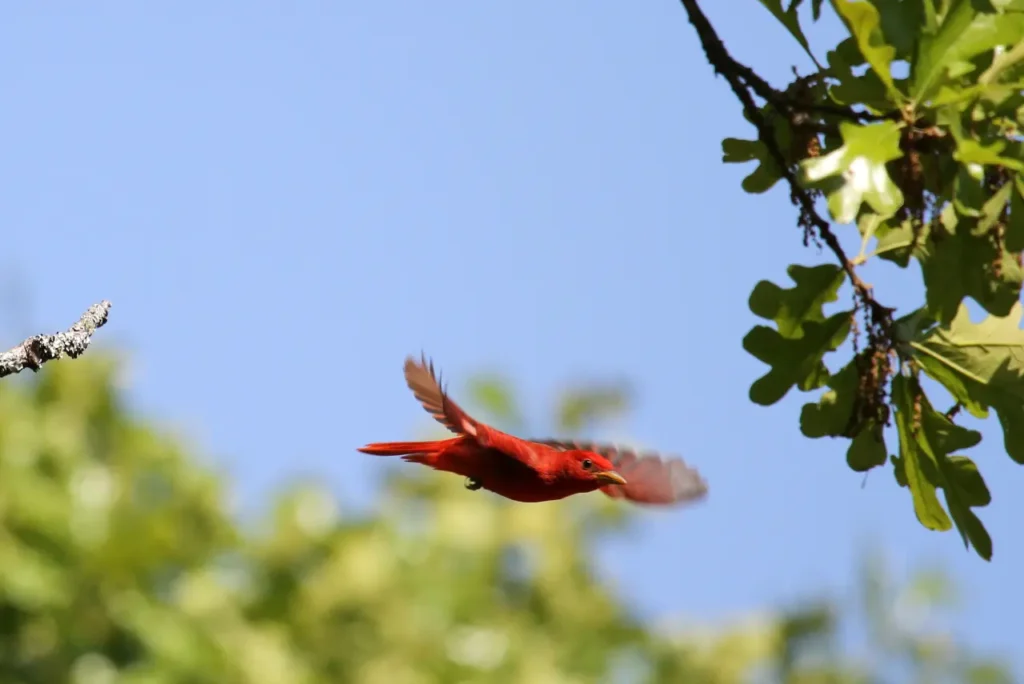
Appearance and Plumage
The Scarlet Tanager is a medium-sized songbird, measuring around 6.5 to 7.5 inches (16 to 19 centimeters) in length. During the breeding season, adult males boast a brilliant and eye-catching plumage. Their bodies are adorned with a vibrant scarlet red color, contrasting with jet black wings and tail. In contrast, adult females and non-breeding males exhibit a more subdued appearance, featuring a soft yellow-green plumage with olive-gray wings and tail.
The striking difference between the breeding and non-breeding plumages of male Scarlet Tanagers often leads to them being mistaken for different bird species during different times of the year.
Habitat and Range
Scarlet Tanagers are primarily found in deciduous and mixed woodlands across eastern North America. They prefer mature forests with a dense canopy cover, as they thrive in the sheltered environment provided by the tree foliage. During their breeding season in the spring and summer, they migrate from their wintering grounds in South America to their nesting territories in the United States and parts of Canada.
Behavior and Song
The Scarlet Tanager is well-known for its distinct and melodious song. The male’s song is often described as a series of clear and cheerful phrases, resembling the sound “chip-burr.” Their songs can be heard echoing through the forest as they establish territories and attract mates during the breeding season.
While Scarlet Tanagers are not considered highly acrobatic like some other bird species, they are skillful fliers, adeptly maneuvering through the dense foliage as they forage for insects and fruits.
Diet and Foraging
The diet of the Scarlet Tanager consists mainly of insects and fruits. During the breeding season, they primarily feed on insects, including caterpillars, beetles, and ants, which provide essential protein for their growing chicks. As the season progresses and fruits become more abundant, they supplement their diet with a variety of berries and other soft fruits.
Conservation Status
The Scarlet Tanager is not considered globally threatened, and its populations appear to be stable. However, like many bird species, it faces threats from habitat loss due to deforestation and urbanization. Maintaining and protecting the mature forests that serve as its breeding and nesting grounds are essential for the continued well-being of this magnificent bird.
The Scarlet Tanager graces North American forests with its fiery beauty and sweet melodies, leaving a lasting impression on those who are fortunate enough to witness its presence. As a symbol of the vibrancy and diversity of nature, this striking songbird captivates our hearts and inspires us to cherish and protect the precious habitats it relies on for survival. By fostering a deeper understanding and appreciation for the Scarlet Tanager and its fellow avian inhabitants, we contribute to the preservation of the rich ecosystems that make our world a place of wonder and beauty.
